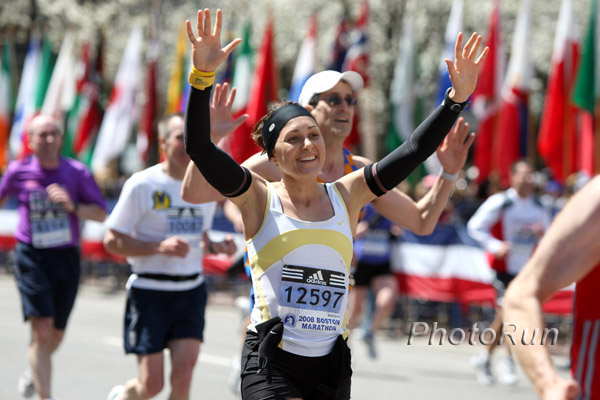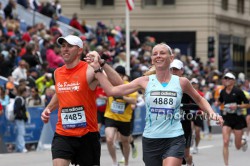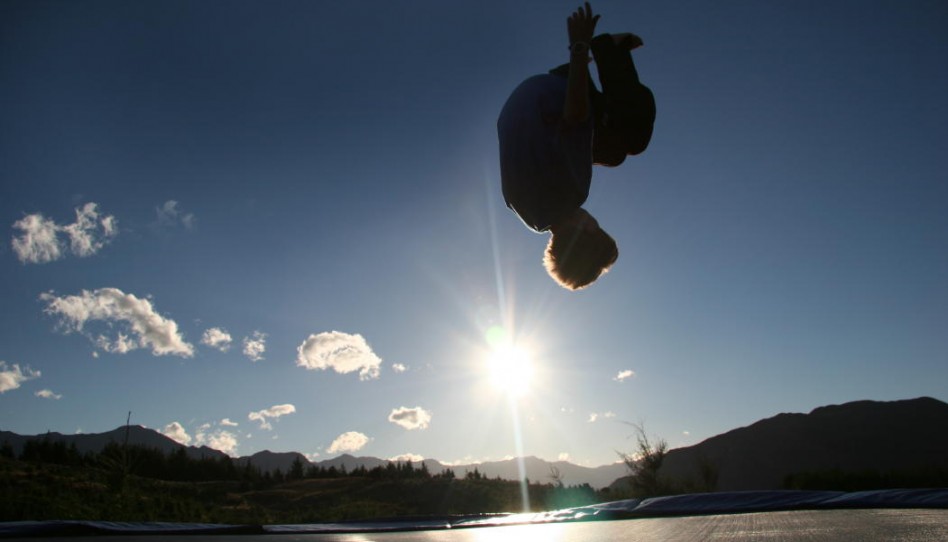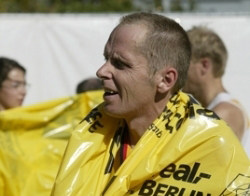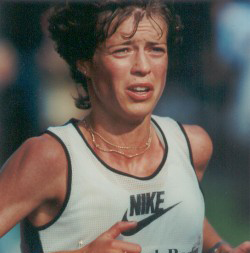Getting Your Children Excited about Running
The summer days are within our grasp, and the easing of Covid restrictions on schools and daycare centers suggest that our children can finally experience urgently needed normalcy. They can play together again, bicycle, play ball, hike, or run—all the carefree activities that children need. Often these are underestimated physical workloads, even if they move around in a playful way. Children want to go outside, to let off steam, to revel in being kids. This makes them resilient. If exercise and fitness are part of the family routine, they may be drawn to it on their own one day. For example, many parents take their little ones with them in a buggy when they go out running. When these children grow older, they might begin running on their own—and maybe one day pushing their little ones in a buggy.
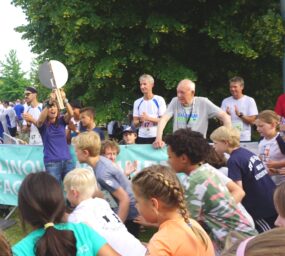
Children’s curiosity knows no bounds and so it is not difficult to inspire them. It is often enough to let them do their own thing or simply lead by example. Children follow us wherever we go. And if we follow our children when they want to run far ahead and measure themselves against us, then we show them our joy in doing sports. With the right attitude, we might ignite a little fire in our offspring and they will start running on their own accord.
This is a great gift for the rest of their life. Every study that dealt with the topic came to the same conclusion: Those who grow up physically active promote physical and mental health in the long term and increase their performance in many areas of life. Even after a long period of inactivity, it is easier to get back to a better fitness routine. It is also good for weight control and more fun in life too – I hope that is not an overly ambitious claim.
Additional Reading: Benefits of Exercise for Children
How Running Helps Children Develop
What sometimes cannot be seen right away are the personal development benefits. Developing stamina and camaraderie strengthen self-esteem and bring a sense of belonging to a community. The inner awareness that you have done something good for yourself is what makes the first steps in this direction so enjoyable and valuable. Often the next ones follow by themselves.
I would like to share with you some general advice. As soon as children want to run or participate in a physical activity, go with them and encourage them. That is easier said than done. Creating optimal conditions is not always easy—especially with the added challenges of the pandemic. We always want to protect our little ones and keep them from harm’s way but finding avenues to participate in sports and run together is always worthwhile. Look to the beautiful paths in the parks, forests and around lakes for the children’s first attempts at running. Just step outside the door, take a deep breath and off you go into a wondrous journey through nature.
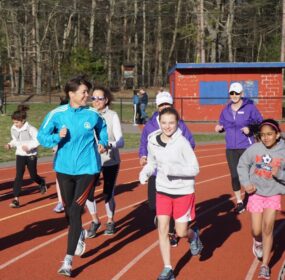
Once you have started, you are halfway there. You just need to make sure that it is a joyful new sporting adventure for the children—and hopefully it will remain this way. Easy running always works. In the beginning, do not push the little ones, let them feel where the enjoyment is for themselves. Give children some time. You will quickly be able to determine what your child’s inclination is, what they prefer, when they are feeling overwhelmed, or if they are drawn to one particular activity. Although it has been shown that children have good natural stamina, a half marathon or marathon goal is by no means appropriate at this time. You can keep them busy with physical activity for a long time if they have small breaks in between. They will signal when they need a break.
For the first real running sessions this would mean: Run short sections with them (with small walking breaks). Randomly choose the running sections using the natural conditions around you. For example, run a little faster to the next corner, to the next big tree or lamppost, then walk again. Stay in this approach for 15 to 20 minutes, and only longer if you feel it fits the physical conditions of the child. I always think it is better to run small segments faster with frequent breaks than long slow ones with less breaks.
Two reasons for that. First, the children are still in the growing phase, so the tendons and ligaments should not be stressed too long with the same movement. Running long distances only develops with age, for most this comes in the late teenage years. Second, you can motivate better with running games and short goals. They will stay mentally engaged longer and they can also relax better during breaks.
Varied running games are ideal at the beginning. Something like this can be organized well in an indoor hall or stadium or simply on a suitable running track in the forest or park. There you can work on different sections together, maybe even race from time to time. I have had good experiences with games at my running events. If you notice that your child absolutely wants to run more on their own accord, you can of course encourage this ambition. It is important to have running shoes that are not too tight, well-fitting, preferably one size larger, and never bump your toes in front. A finger’s breadth of air is a must. Barefoot running is a good idea as well; it strengthens the feet and joints and helps develop a natural running style. Just make sure you pay attention to suitable conditions that don’t have the potential risk of injury. Choose locations where you can see hazards—roots, rocks, sharp objects, or any condition that could injure your feet. The lawn in the stadium or on your own property, or a sandy stretch of beach might work for you.
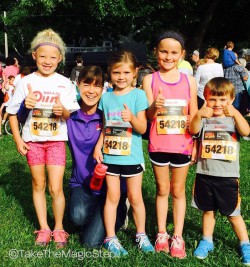
Overall, it is important to provide the children the opportunity to experience several different activities to see what they seem to enjoy the most. Hopefully then they will be eager to pursue their inclination on their own. A less fearful approach will allow predictable risks. It is healthy and completely natural in children. It shows that they have interest and ambition. Trying to run a little further or faster, jump a little higher, or experimenting with more complex actions maintains and promotes the fun of the process, and there is a better chance the child will stick with it. What can be done easily and without problems can quickly become boring. Combine many running sessions with ball games, for example. The variety of movements will also strengthen them and encourage mental flexibility, better reactions, and better enjoyment of the personal challenge of your short sprints. If your child develops a passion for longer distances on their own, you can support them to do an easy 5K loop.
As they grow older, children can clearly be challenged more and begin measuring their strength and athleticism to others. Only then does it make sense to significantly increase the scope and quality of the endurance runs, and to include interval programs and other training methods, combined with running-specific strength requirements. This could be part of another column on “Running Training for Teens.”
And something else: Children need praise and recognition when they have achieved a goal, no matter how small. Small achieved goals add up to big achieved goals and keep the child motivated to continue their running. You do not have to overdo it, no exaggerations. A child will sense whether the praise is too much for the accomplishment or whether it is deserved. This insight on your part will be appreciated, especially as the child becomes a teen.
I hope you enjoy running with the family as we head into summer. Hopefully, there are many opportunities to step back from everyday tasks and enjoy running through nature and sharing the joy with your family. Good luck. Together we hold out until the pandemic is really over…
Yours,

Uta Pippig aka Pippi Langlauf
This article is adapted from my column “Sie möchten Ihr Kind für das Laufen begeistern? So gelingt es” in the German newspaper “DIE WELT” with permission (you can read the article in the German language and the entire online “WELT” with a small fee to the newspaper).
Reading Suggestions:
Updated March 31, 2023
- Posted May 30, 2021
© Copyright 2021-2022 Uta Pippig and Take The Magic Step®. All Rights Reserved.
